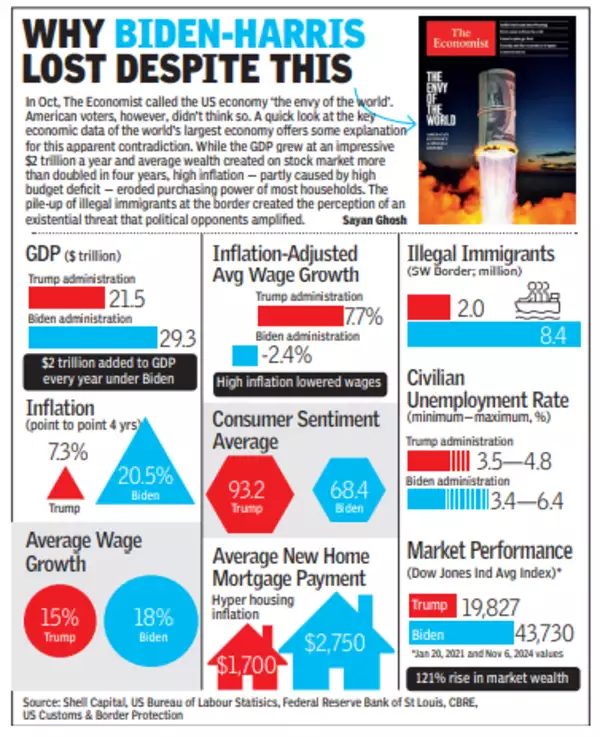
Democrats have been warning about the party’s disproportionately light electorate for more than ten years. According to managers, in order to remain competitive for the White House, they would need to attract more dark, Latino, and other citizens of color.
On Tuesday, Donald Trump showed how it could be done.
His triumph over vice-president Kamala Harris was significant, wide and reliant on voters from primary Democratic districts. Findings revealed that Trump maintained his hold over the pale, working-class electorates who had ushered in his political dynasty. But he also made some humble increases with Latino voters, black voters, and in the suburbs and cities.
Trump’s efficiency did not unapologetically change the Republican Party into the biracial coalition of working-class citizens that some managers believe is necessary for survival in the country’s rapidly changing environment. But he nudged it in that way.

Even small incremental shifts were enough to bring Trump back to power and set him on course to get the popular voting at a time when the country is quickly divided, especially between the rich and the poor, and between those with and without a college education. The changes were seen as proof of concept by traditional planners who have pushed the group to expand its appeal. Democrats, who have long relied on the help of minority citizens, agonised over the changes. ” The loses among Latinos is nothing short of fatal for the gathering”, said Rep. Ritchie Torres, an Afro-Latino Democrat whose district based in New York City’s Bronx borough is greatly Spanish. Torres expressed concern that Democrats were becoming more and more dependent on” a far-left with a college degree who is in danger of deceiving us from working-class citizens.”
There was evidence of Trump’s advances across the country. In the strongly blue-collar group of Fayette County, Pennsylvania, outside Pittsburgh, Trump won almost 70 % of the vote, expanding his profits by about 5 percentage points since 2020. Nationwide, Hispanic-majority districts on regular shifted toward Trump by 10 percentage points. His benefits with black voters were less important, but they were still significant in smaller communities throughout Georgia. Hancock, Talbot and Jefferson regions, all majority-black regions with no more than 15, 000 persons, shifted toward Trump. Trump campaign celebrated a triumph in Baldwin County, Georgia, where 42 % of the population is black. Republicans had never won the state in years.
Asian-American citizens, who make up the fastest-growing ready public in the country, also appeared to have drifted away from Democrats, according to return surveys and illegal results. ” The strength of Trump’s approach into the standard Democratic coalition of voters of color was stunning,” said Yale professor Daniel HoSang, who has written about the fall of right-wing social behaviour among minority groups.
Working-class citizens were again aligned behind Democrats, while the Republican Party catered to the upper-income and business objectives. Trump made a place of shifting his plans to these brand-new Republican voters by proposing to abolish the tip income. He promised to increase the number of tax deductions. He vowed to boost the number of producing work in the nation. Some Hispanic voters were not offended by Trump’s conservative immigration policies. According to poll results, about one-third of Latino voters voted in favor of his plans for mass persecution of refugees without legal standing.
The result was a far cry from the group’s renowned “autopsy” review following Mitt Romney’s fight in 2012, which urged Republican to acquire more sympathetic immigration laws. Instead, HoSang said, the winning formula was much closer to what Steve Bannon, Trump’s ex-chief strategist in the White House, has called “inclusive nationalism”.



